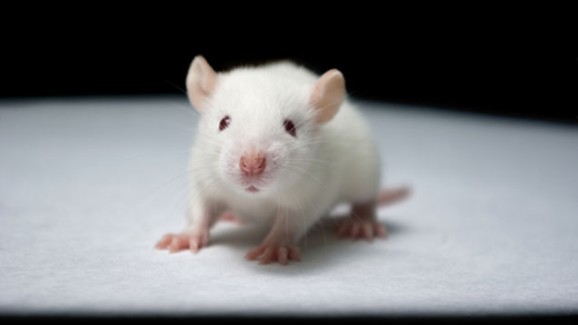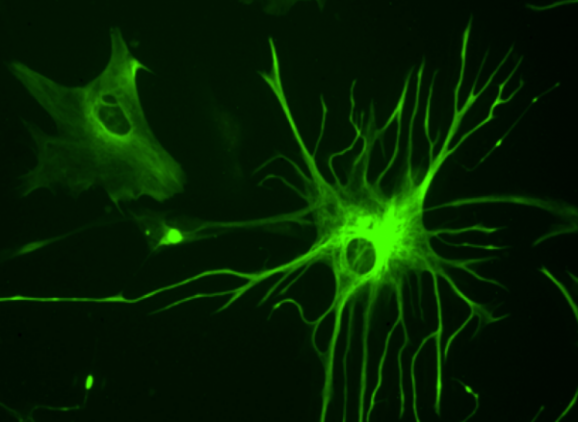This “Supermouse” Has Human Brain Cells
This article is more than 2 years old
 Even though rats and mice can be trained to do all kinds of lab experiments, run through mazes, and figure out how to get rewards, their intelligence has its boundaries, largely because of the limitations of their tiny brains. But University of Rochester Medical Center researchers wanted to see if they could alter the brains of lab mice by injecting them with human cells. It might sound crazy, but it actually worked—the test mice became smarter than the others.
Even though rats and mice can be trained to do all kinds of lab experiments, run through mazes, and figure out how to get rewards, their intelligence has its boundaries, largely because of the limitations of their tiny brains. But University of Rochester Medical Center researchers wanted to see if they could alter the brains of lab mice by injecting them with human cells. It might sound crazy, but it actually worked—the test mice became smarter than the others.
The research team used glial cells from human fetuses that had been donated to science. Glial cells are much more numerous than neurons. Glia ensure that the neurons function properly by transporting nutrients to neurons, keeping the neurons in place and insulating them, as well as digesting dead ones. The baby mice used in the experiment had their normal mouse neurons, but then the researchers injected them with 300,000 human glia each, which became astrocytes, star-shaped glial cells abundant in the human brain and spinal cord that help strengthen synapses.
After approximately a year, the human cells completely took over the mice’s natural ones. They multiplied until each mouse had some 12 million of them. One of the researchers observed that, “It seemed like the mouse counterparts were fleeing to the margins.” Human astrocytes are much bigger than the mouse version, and they have roughly 100 times more tendrils. Tendrils facilitate the electrical signals that travel across synapses, so the mice with the extras received a significant boost, “like ramping up the power of your computer.”

Some scientists are surprised that the human cells work at all in mice. One question raised by the experiment is whether human astrocytes behave the same in mice as they do in people, or whether being inside mice alters the cellular features. Regardless, the scientists confirm that the mice are still human, and don’t have any special human capabilities.
The researchers conducted another experiment where they injected human glia into baby mice who had protein-production deficiencies resulting in a lack of nerve insulation. The injected glia became brain cells with the ability to make the insulating material. That experiment suggests that when the glia become integrated into the hosts’ brains, they essentially figure out and adapt to what the brain needs. The findings could have important implications on the treatment of brain diseases such as multiple sclerosis. The scientists are pursuing a clinical trial to test a treatment with immature glial cells.












